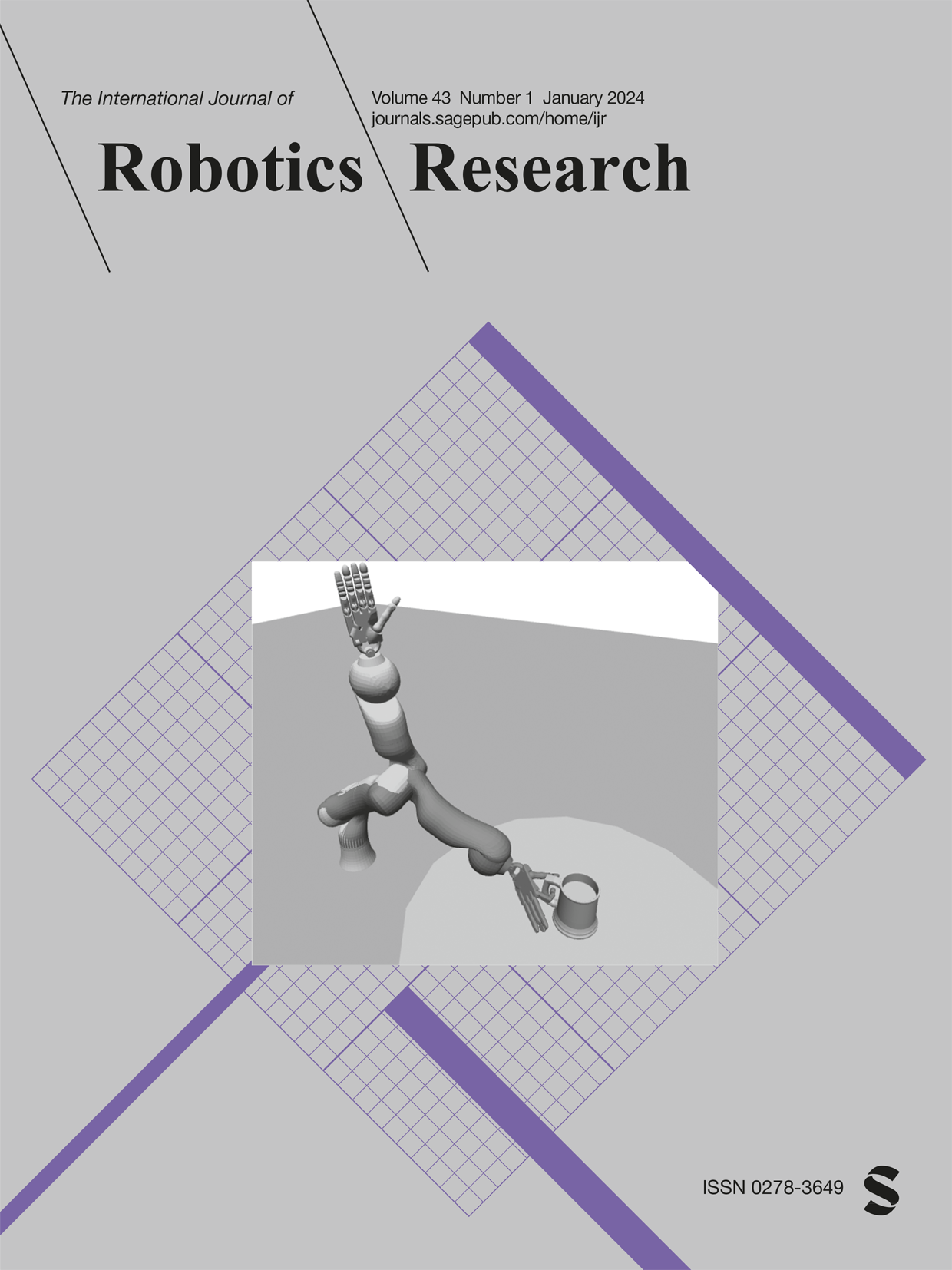MassMIND: Massachusetts Maritime INfrared Dataset
IF 5
1区 计算机科学
Q1 ROBOTICS
引用次数: 3
Abstract
Recent advances in deep learning technology have triggered radical progress in the autonomy of ground vehicles. Marine coastal Autonomous Surface Vehicles (ASVs) that are regularly used for surveillance, monitoring, and other routine tasks can benefit from this autonomy. Long haul deep sea transportation activities are additional opportunities. These two use cases present very different terrains—the first being coastal waters—with many obstacles, structures, and human presence while the latter is mostly devoid of such obstacles. Variations in environmental conditions are common to both terrains. Robust labeled datasets mapping such terrains are crucial in improving the situational awareness that can drive autonomy. However, there are only limited such maritime datasets available and these primarily consist of optical images. Although, long wave infrared (LWIR) is a strong complement to the optical spectrum that helps in extreme light conditions, a labeled public dataset with LWIR images does not currently exist. In this paper, we fill this gap by presenting a labeled dataset of over 2900 LWIR segmented images captured in coastal maritime environment over a period of 2 years. The images are labeled using instance segmentation and classified into seven categories—sky, water, obstacle, living obstacle, bridge, self, and background. We also evaluate this dataset across three deep learning architectures (UNet, PSPNet, DeepLabv3) and provide detailed analysis of its efficacy. While the dataset focuses on the coastal terrain, it can equally help deep sea use cases. Such terrain would have less traffic, and the classifier trained on cluttered environment would be able to handle sparse scenes effectively. We share this dataset with the research community with the hope that it spurs new scene understanding capabilities in the maritime environment.MassMIND:马萨诸塞州海事红外数据集
深度学习技术的最新进展已经在地面车辆的自动驾驶方面取得了突破性进展。经常用于监视、监测和其他日常任务的沿海自主水面车辆(asv)可以从这种自主性中受益。长途深海运输活动是额外的机会。这两个用例呈现了非常不同的地形——第一个是沿海水域——有许多障碍物、结构和人类的存在,而后者基本上没有这些障碍。环境条件的变化对这两个地区来说都是共同的。绘制此类地形的稳健标记数据集对于提高能够驱动自动驾驶的态势感知至关重要。然而,只有有限的海洋数据集,这些数据集主要由光学图像组成。尽管长波红外(LWIR)是光谱的强大补充,有助于在极端光照条件下,但目前还不存在带有长波红外图像的标记公共数据集。在本文中,我们通过提供在沿海海洋环境中捕获的超过2900幅LWIR分割图像的标记数据集来填补这一空白。使用实例分割对图像进行标记,并将图像分为天空、水、障碍物、活障碍物、桥梁、自我和背景7类。我们还跨三种深度学习架构(UNet, PSPNet, DeepLabv3)评估了该数据集,并提供了其有效性的详细分析。虽然数据集侧重于沿海地形,但它同样可以帮助深海用例。这样的地形会有更少的流量,并且在混乱环境下训练的分类器能够有效地处理稀疏的场景。我们与研究界分享这个数据集,希望它能在海洋环境中激发新的场景理解能力。
本文章由计算机程序翻译,如有差异,请以英文原文为准。
求助全文
约1分钟内获得全文
求助全文
来源期刊
CiteScore
22.20
自引率
0.00%
发文量
34
审稿时长
6-12 weeks
期刊介绍:
The International Journal of Robotics Research (IJRR) has been a leading peer-reviewed publication in the field for over two decades. It holds the distinction of being the first scholarly journal dedicated to robotics research.
IJRR presents cutting-edge and thought-provoking original research papers, articles, and reviews that delve into groundbreaking trends, technical advancements, and theoretical developments in robotics. Renowned scholars and practitioners contribute to its content, offering their expertise and insights. This journal covers a wide range of topics, going beyond narrow technical advancements to encompass various aspects of robotics.
The primary aim of IJRR is to publish work that has lasting value for the scientific and technological advancement of the field. Only original, robust, and practical research that can serve as a foundation for further progress is considered for publication. The focus is on producing content that will remain valuable and relevant over time.
In summary, IJRR stands as a prestigious publication that drives innovation and knowledge in robotics research.

 求助内容:
求助内容: 应助结果提醒方式:
应助结果提醒方式:


